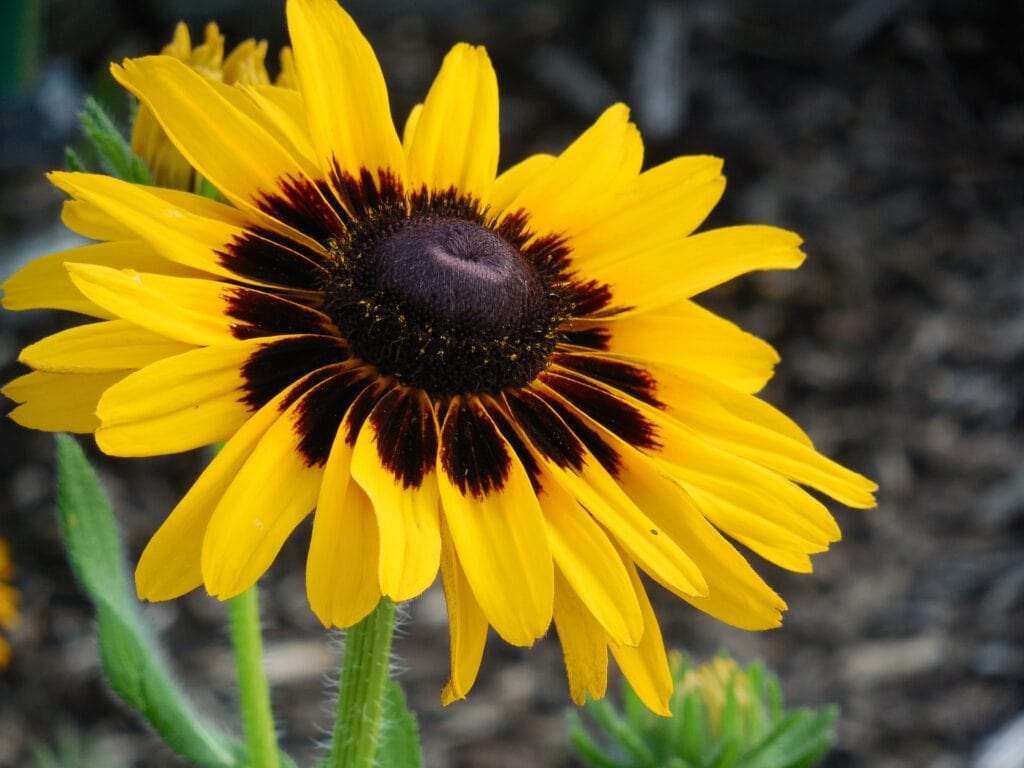What Is the State Flower of Maryland? History, Uses & FAQ
-
Pete Ortiz
- Last updated:

The topic of state flowers typically only comes up on trivia or quiz nights at the local bar, but you might as well be better prepared to score points for your team! So, what is Maryland’s state flower?
The state flower of Maryland is the Black-Eyed Susan. The decision to have this flower represent the Old Line State came with disagreements among residents at the time it was selected. If you are curious to learn more about the history behind Maryland’s state flower, read on!
 What Is a Black-Eyed Susan?
What Is a Black-Eyed Susan?
The Black-Eyed Susan (Rudbeckia hirta) is a perennial daisy, a member of the sunflower family. The flower, native to the United States, has long, slim dark-yellow petals with a large dark-brown center that resembles a gum drop. Black-Eyed Susan heads grow to about 2–3 inches in diameter, while the flower itself grows to about 2–3 feet tall. Like most flowers in the sunflower family, the Black-Eyed Susan blooms between late spring and late summer and is commonly found in fields in rural areas across Maryland.

The History of the Black-Eyed Susan
The Black-Eyed Susan has been Maryland’s state flower since 1918, but the idea of choosing this flower to represent the state started in 1898. During a “Woman’s Section” meeting at the Maryland Agricultural College, tere was a discussion about having a Maryland state flower. Votes were cast, with 42 votes for the Black-Eyed Susan and 28 votes for the Goldenrod. (There was just a single vote cast for the Daisy!)
With the majority of the votes, the Black-Eyed Susan should have easily become Maryland’s official state flower, right? It actually took about 2 years for everyone to come to an agreement about the state flower.
The state senator at the time, Harvey Bomberger, stated that the Black-Eyed Susan perfectly matched the colors of the state flag, which embodied the Calvert family crest. However, the pro-Goldenrod Marylanders felt that the enlarged dark center of the Black-Eyed Susan could represent “a black eye from the Kaiser” and that the Goldenrod better honored fallen Maryland soldiers of past wars. Despite the opposition, Governor Emerson C. Harrington codified the Black-Eyed Susan as the state flower on April 18, 1918.
Uses of the Black-Eyed Susan
As with many plants found across the United States, many Indigenous peoples used the Black-Eyed Susan for medicinal purposes. The Cherokee people used the flower to reduce the discomfort from urinary tract infections and back pain. The Iroquois and Seminole also used the plant for external injury treatment, like open wounds and snakebites. This flower was additionally used to help with earaches.
Some people might be familiar with the flower Echinacea and its medicinal purposes. Echinacea has been known to help reduce discomfort from colds, fevers, and coughs. Since the Black-Eyed Susan has similar medicinal properties to Echinacea, this flower is sought after if Echinacea cannot be found.
 Final Thoughts
Final Thoughts
With all the various flowers found across the United States, it is always interesting to learn why a specific flower is connected with a certain state. With the Black-Eyed Susan, the vibrant deep yellow and dark center is similar to Maryland’s flag. Now, you are sure to score a few points at your next quiz night!
See Also:
Featured Image Credit: Pixabay
Contents

 What Is a Black-Eyed Susan?
What Is a Black-Eyed Susan?